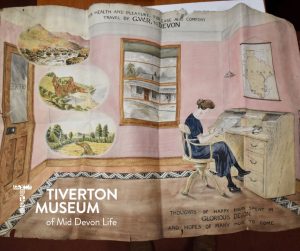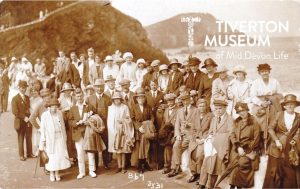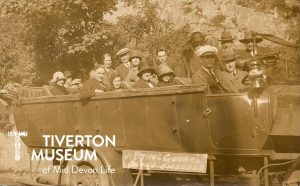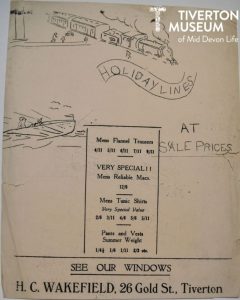The possibility of a family holiday in the South-West became a reality for some in the 1920s. Tourism had been flourishing in the region for a long time for those with the money and leisure time to enjoy a break away from home. As early as 1911, the Trades Union Congress (TUC) started to fight for their members to have the right to paid holiday. By 1925, some employers were offering it but it actually took until 1938 for the first Law to be passed which gave some, but not all, workers the right to a week’s paid leave.

Newspaper Cutting advertising the release of the 1925 edition of ‘Holiday Haunts’ by the Great Western Railway Co. Apparently containing ‘descriptive notes of the Coast and Inland Holiday Resorts served by their system’, along with a list of accommodation.
This rather beautiful hand painted watercolour, probably painted in the 1920s, is in the Museum’s archive collection. The only possible clue to the artist is the name ‘Gwenson’ written on the back. We have been unable to identify a possible artist despite this being a very unusual surname. GWR did hold competitions for poster design in the 1920s, maybe this was a potential entry?

The wording at the top of this poster reads ‘For health and pleasure, for ease and comfort travel by G.W.R to Devon’. At the bottom it reads ‘Thoughts of happy hours spent in glorious Devon and hopes of many more to come’.
Meanwhile, workers from Patchquick in Tiverton are enjoying a ‘day trip’ in 1923. They may have travelled by train or on a charabanc. Trains arriving in Devon may have been met by charabancs to explore further or to take guests to their lodging places.

Patchquick workers enjoying an day trip.

This group were exploring Cheddar Caves.
This rather basic poster shows that local traders were keen to boost their sales in preparation for the holiday season.

The ‘Holiday Lines’ on sale at H.C. Wakefield were men’s flannel trousers, ‘very special’ men’s reliable macs, men’s tunic shirts and summerweight pants and vests.
Written by Museum Volunteer, Sue B
Reference:
TUC https://tuc150.tuc.org.uk/stories/campaigning-for-paid-holiday-for-everyone/ accessed 24 January 2025

